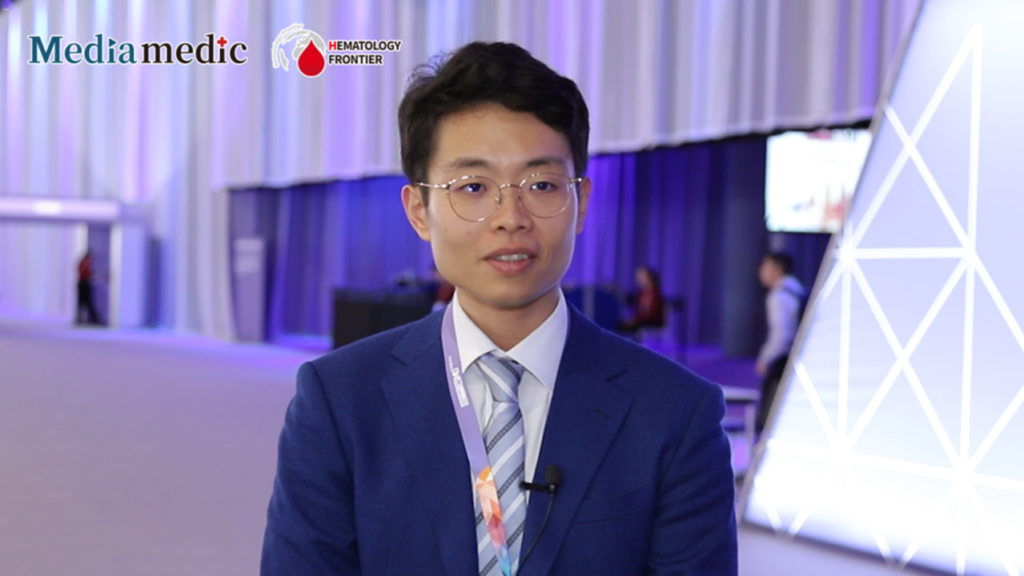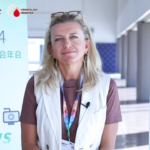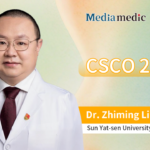
The 2024 Annual Meeting of the European Society for Medical Oncology (ESMO) was recently held in Barcelona, Spain. As one of the premier global oncology conferences, it brought together experts and scholars from around the world to share cutting-edge research and chart future directions. During the conference, Dr. Junmin Song from the Jacobi Medical Center, Albert Einstein College of Medicine, presented the first real-world study comparing BCMA CAR-T therapy with bispecific antibodies in the treatment of multiple myeloma (802MO). This presentation garnered significant attention from attendees. Hematology Frontier invited Dr. Song to provide an in-depth interpretation of the study and to discuss the future prospects of these two innovative therapies in multiple myeloma treatment.Hematology Frontier: At the ESMO conference, you presented the first real-world study comparing BCMA CAR-T therapy with bispecific antibodies in the treatment of multiple myeloma. Could you elaborate on what motivated you to conduct this study and what significance you believe this comparison holds for clinical practice and patient treatment options?
Dr. Junmin Song: Right now, for relapsed and refractory multiple myeloma, after triple therapies, including IMiDs, proteasome inhibitors, and daratumumab, there is no current fixed guideline on what to start next. In 2022, two new therapies emerged in the field of multiple myeloma treatment: the bispecific antibody teclistamab and CAR-T cell therapies, including cilta-cel and ide-cel. However, it remains unclear which therapy should be prioritized once the disease becomes refractory. That uncertainty motivated me to initiate this study.
Currently, our study has involved one year of follow-up. During this period, we found that, compared to bispecific antibodies, CAR-T therapy showed a higher overall survival rate but was also associated with an increased risk of cytokine release syndrome (CRS). However, given that these therapies were only approved by the FDA in late 2022, our study duration remains short, and we need longer-term, prospective research to confirm these findings.
Hematology Frontier: The study findings indicate that CAR-T therapy is superior to teclistamab in terms of overall survival, with even more pronounced benefits observed in elderly patients and those who have not undergone bone marrow transplantation. In your opinion, what are the possible mechanisms behind this disparity? Furthermore, do these discoveries lend support to the idea of prioritizing CAR-T therapy as a treatment option for specific patient populations?
Dr. Junmin Song: First, I must clarify and correct some points. The data in our abstract submission was cut off in April, but the follow-up data presented at the conference up to August showed no significant difference between the two treatments in elderly patients. Similarly, there was no significant difference among patients who had not undergone bone marrow transplantation. Therefore, we cannot draw definitive conclusions at this point. Despite this, the significance of the study remains. It serves as a stepping stone for future clinical trials, laying the foundation for subsequent comparative prospective studies. Although there are limitations, this study is undeniably a valuable starting point.
Hematology Frontier: While CAR-T therapy demonstrated a higher overall survival in the study, it was also accompanied by a higher incidence of cytokine release syndrome (CRS). For clinicians and patients, how should they weigh these factors when balancing efficacy and safety? What suggestions or guidelines do you have in this regard?
Dr. Junmin Song: When balancing efficacy and safety, clinicians and patients must assess the severity of CRS, especially if it reaches grade three or higher. Previous trials have shown that while 70% to 90% of patients receiving CAR-T therapy experience CRS, the incidence of grade three or higher CRS is relatively low. More studies are needed to confirm this. Furthermore, regarding overall survival, we need to clarify whether the observed benefits are due to the therapy’s efficacy or if other factors, such as infections or lead-time bias, play a role. CAR-T therapy takes approximately eight weeks to manufacture, while teclistamab is an off-the-shelf antibody. This timing difference and other factors need to be considered carefully.
Hematology Frontier: Looking into the future, what do you envision for the development prospects of BCMA CAR-T therapy and bispecific antibody teclistamab in the treatment of multiple myeloma? Is there a possibility for new treatment strategies or drug combinations to emerge, further optimizing patient outcomes and quality of life?
Dr. Junmin Song: Currently, multiple myeloma remains incurable due to its high relapse rate. This necessitates further exploration of new treatment strategies. One important area of research will be investigating the sequencing of CAR-T therapy and teclistamab to determine which approach is more effective. Prospective follow-up studies are essential to provide scientific evidence for optimizing treatment plans and improving patient outcomes.


